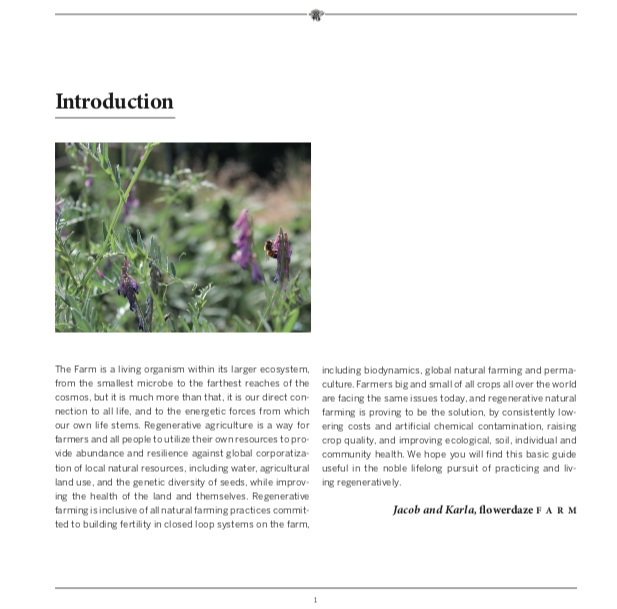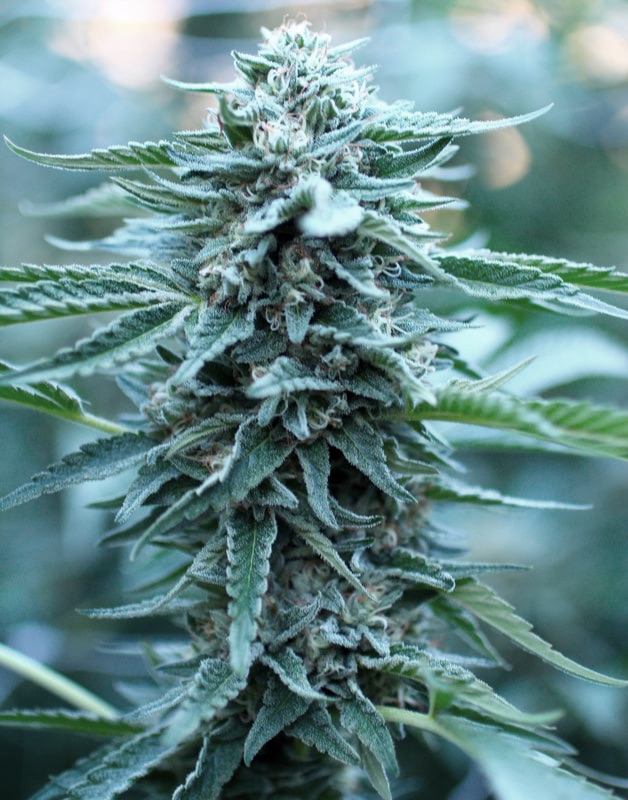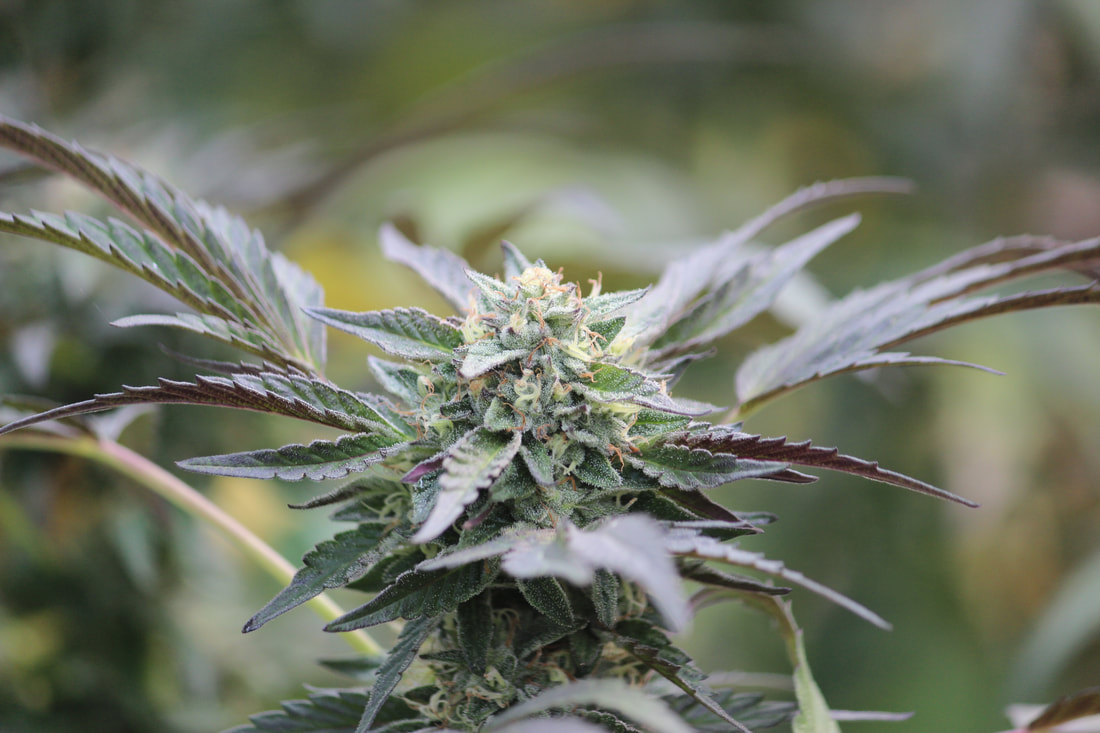|
CLICK HERE TO ORDER The Flowerdaze Farm Regenerative Guide to Cannabis Want to know how we grow award-winning flowers using only homemade, farm-sourced inputs? This is an easy-to-use basic guide to our season-long recipe for cultivating the dankest, highest quality cannabis, using only natural, farm-sourced, homegrown and homemade ingredients. For all beyond-organic gardeners, these fertility methods can be utilized on any scale from home grows to craft commercial farms. Reviews "Cannabis farmers have the ultimate responsibility of working with the plant that has the potential to clean the planet through its phytoremediation abilities while transforming the health of humanity. Thankfully we have role models and teachers like Jacob and Karla to guide us on this path. This little gem of a book is straightforward and packed with clear instructions on how to transform your gardening using time-tested biodynamic and regenerative farming techniques." -Frenchy Cannoli, Master Hashishin "Flowerdaze Farm's regenerative and biodynamic cultivation methods produce exceptionally dank flowers. Generously sharing their time-tested recipes and techniques, they've made it possible for any gardener to grow cannabis of a superior quality that is sure to stand out in a market full of mids." -Caitlin Podiak, Certified Dank "Thank you Flowerdaze Farm for taking the time to transform your expertise into DIY information for all. We look forward to supporting communities everywhere in their transition toward regenerative agriculture." -Hollie and Dan, Compliant Farms Certified "I've been seeking the wisdom of how to deeply connect with cannabis and our land. This guide from Flowerdaze Farm showed me the truth, love, and how to move forward with transitioning into a regenerative farm." -Sassy from Booney Acres CLICK HERE TO ORDER YOUR PRINTED COPY Also available in Ebook. Look for The Flowerdaze Farm Regenerative Guide to Cannabis Ebook at most major Online Retailers
0 Comments
At cannabis events we have periodically been told that we remind people of “a young Niki and Swami.” And while I am pretty certain we are much lesser known than they, like Niki and Swami and good folks like the O’Neills down in Mendo, we have been actively involved from the beginning in the legalization process, and the fight to defend the small craft cannabis farmer in the advent of Big Weed. But we have been rather quiet when it comes to revealing our personal identity outside of our very remote and hidden neck of the woods. Maybe it is because we live in Trinity, land of outlaws and rebels, typically regarded by the more yuppified and mainstream Mendocino and Humboldt counties to be something like the wicked stepsister of the Emerald Triangle. Maybe it is because years of forced anonymity and secrecy and the questionable nature of our government's laws have kept us from revealing our true identity, even when affiliated with award winning weed collaborations. Or maybe it is because while here in the Emerald Triangle Weed used to be something everyone had a little bit of in their garden to help them get by, we have witnessed the rapid evolution of both a massive illegal industry with no regulation and a legal industry so clearly carved out for big business, and that scares us a little bit for the future of everyone who we love just trying to make it in the brave new world of pot. Due to its criminalization and prohibition, cannabis has had the strange benefit of having been excluded for the better part of the last century from the vile clutches of the legal corporate industrial economic machine. That is all about to change. As exciting as legalization is, the logistics of regulation are complex, and come Jan 1st 2018 your farmer can’t legally deliver their own crop to market without going through the proper channels. This goes way beyond the farmer needing to be a fully licensed, permitted cultivator. To be legal, they must also seek and secure legal distribution and transportation channels or be vertically integrated, i.e. own their own dispensary, in order to legally reach the retail market. It goes without saying that vertical integration and the invitation by our government to big business has made it nearly impossible for the small Emerald Triangle farmer to come out of the shadows and participate in the legal California market. Small farmers are in great detriment of not being able to get their crop to market without the use of a large corporate distribution company who may or may not have their or yours, the consumer’s, best interests at heart. Furthermore, there are a multitude of corporate and private interests who have already attempted to stake out the controversial intellectual property of patenting genetic strains, including patenting the entire genus of cannabis sativa entirely. The Monsantos of Weed are out there, and truth be told, they scare the crap out of us. But we also scare the crap out of them. We know how to grow organically without using any externally sourced inputs, and still pass labs, a feat many industrial agronomists still have yet to accomplish. We know how to breed and save seed that will retain its true genetic characteristics, not just produce F-1 hybrids of inconsistent phenotypes. But most importantly, we know how to keep it all hidden, and if we have to, we will go back to the old ways before we will go along with the Monsantos of Weed. Are we in a position as small farmers to win against the Monsantos of weed? That is difficult to say considering the regime currently in federal power. Meanwhile in California, we are banding into cooperatives and focusing on quality. However, our days of operating like the mob are not far behind us, and we aren’t afraid to have to be rebels and even outlaws in the name of what is right. Ironically, this kind of vigilante courage is also a classically American trait, and one that is exhibited frequently in backwoods growers. It is a trait that I would prefer to see a lot more of in the legal cannabis industry. After all, aren’t our strong, independent character and our counter-culture way of life a large part of what makes weed culture so cool? Most importantly from a consumer standpoint, who do you want growing your weed? Do they even smoke pot? You might be surprised to find out how many posers are jumping aboard the green rush bandwagon. And since these days it is all about marketing, they are all going to tell you they are “small batch”, “sustainable”, from “family farms” and whatever else you want to hear. Who is bluffing? That still remains to be seen. Will distributors be willing to pick up weed from small farmers who live in the boonies when they could just get it in the Central Valley or a nearby warehouse the size of a shopping mall? Will the posers and sellouts figure out how to grow great weed on a large scale? Perhaps. Will it compare to the weed lovingly grown in small batches by heritage Artisan farmers with True Terroir in the most distinctive cannabis Appellations in the Emerald Triangle? Doubtful. Once again, the proof will be in the pudding, and it will be up to consumers to decide how important the source of what they ingest into their lungs and minds is to them.
It is very possible that there will be so few operators left standing when the new state licensing laws take effect that there could be a temporary shortage of legal weed on the shelves. If we are lucky, the small farmers who make it through the hoops will have a chance to reach the shelves. That will indeed be temporary, as the new posers rush to build their mono-crop weed mega farms like the Budweiser of cannabis. Over-supply of unexceptional product is likely to continue. But how easily you will be able to order a craft bud from an artisanal small batch farmer still remains to be seen. I would like to think there are enough interested consumers out there who do care about both quality and a farmer's growing practices, and also want to support truly ecological and regenerative agriculture and small family farms, to sustain the relatively small amount of cannabis being produced in a truly regenerative poly-culture system. Biodynamics is a holistic, ecological, and ethical approach to farming, gardening, food, and nutrition that has been practiced for nearly a century, on every continent on Earth. Biodynamic principles and practices are based on the insights of renowned German scientist and philosopher Rudolf Steiner and have been developed through the collaboration of many farmers, scientists and researchers since the early 1920s. It may come as a surprise to some that one of the most important centers for the preservation of Biodynamics was right here in our remote little valley deep in the heart of the Emerald Triangle, where one of Rudolph Steiner’s most dedicated prodigies, Minerva Brooks, emigrated in the first half of the 20th century to escape the Nazi regime in Germany and bring Biodynamics safely out of Nazi Germany to the United States. Minerva had had a dream shortly after Steiner’s death, in which he came to her and very clearly uttered only one word, “Hyampom”. Minerva Brooks had never heard this word before in her life and had no clue as to its meaning. She did, however, embark upon a journey to the United States, initially landing in the Middle West somewhere. She continued her journey for “Hyampom”, discovering that there was such a place, named so by the Wintu Tribe, which had long inhabited the tiny remote river valley deep in the mountains of Northern California. She relocated here, where she spent the next 40 years running a Biodynamic farm in this pristine wilderness Valley. Today, the Biodynamic movement encompasses thousands of regenerative gardens, farms, ranches, orchards, and vineyards, in a wide variety of climates, ecological contexts, and economic settings. Biodynamic farmers strive to create a balanced and diverse ecosystem that generates health and fertility as much as possible from within the farm itself. A Biodynamic farm is the ultimate regenerative farm. Preparations made from fermented manure, minerals and herbs are used to help restore and harmonize the vital life forces of the soil and to enhance the nutrition, quality, and flavor of the food and products being raised. Biodynamic practitioners also recognize and strive to work in cooperation with the subtle influences of the wider cosmos on soil, plant, and animal health. Perhaps this is why Biodynamics is sometimes misunderstood and considered to be like a form of witchcraft. As much as I love to think of myself as a witch having inalienable powers, in Biodynamics the connections between living things on Earth and the forces of the cosmos are astronomical in nature, not astrological or mythological.  In other words, we use science to determine astronomically which influences are having an effect on the Earth at any given time, and how those influences subtly affect living organisms of different types. It allows us to perceive ourselves and the plants, animals and soil we raise as part of a whole interconnected living organism that is The Farm. Furthermore, it allows us as The Farm to be holistically interconnected with the larger global energies of The Earth and the greater cosmic forces of The Universe. It provides us with a real, direct and simple approach to healing the Earth and ourselves. Biodynamics is thus not just a holistic agricultural system but also a potent movement for new thinking and practices in all aspects of life connected to food and agriculture. Witchcraft or Science, either way, it works. I like to think of it more as a way of life. |
Follow
AboutFlowerdaze Farm is the regenerative farm of a slightly reclusive, enigmatic family of renegade backwoods award-winning artisans. This Emerald Triangle family farm specializes in artisanal medicine, producing small batch, one-of-a-kind, connoisseur, full season cannabis flower, handcrafted from start to finish and reflecting the distinctive flavors, characteristics and true Terroir of the land in one of the most special cannabis appellations and premier micro-regions for cannabis cultivation in the world. Archives
February 2021
Categories
All
|











 RSS Feed
RSS Feed